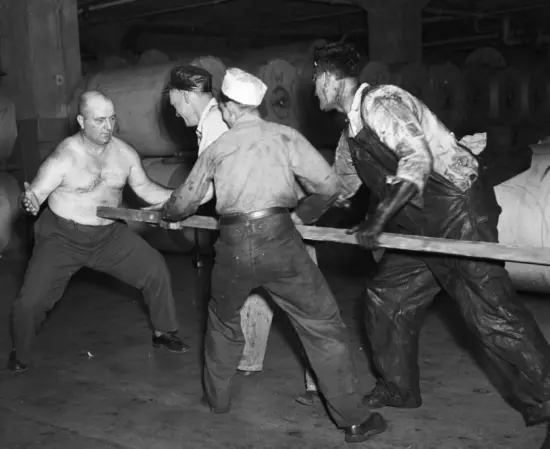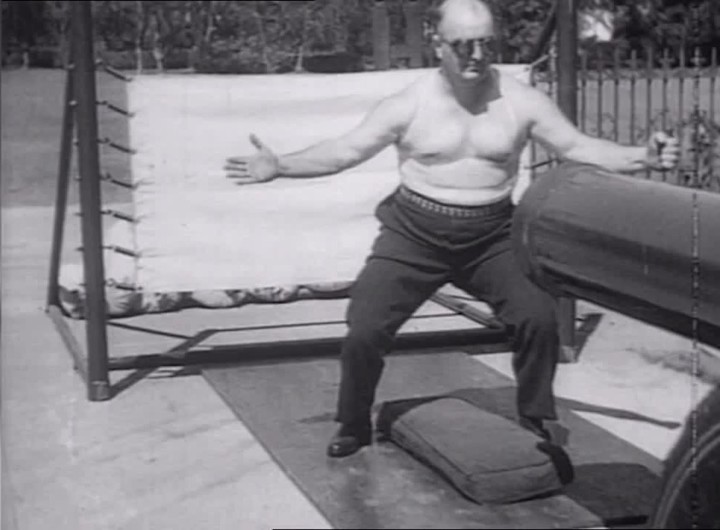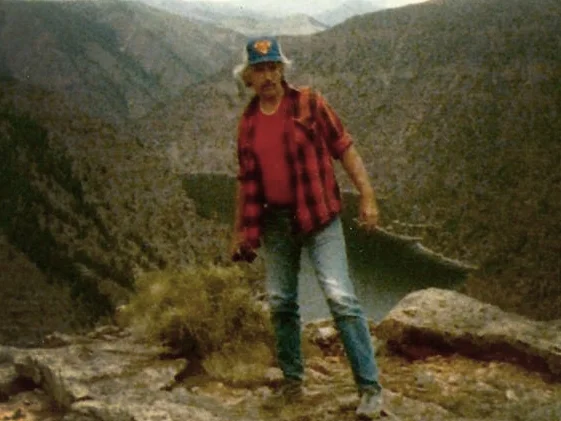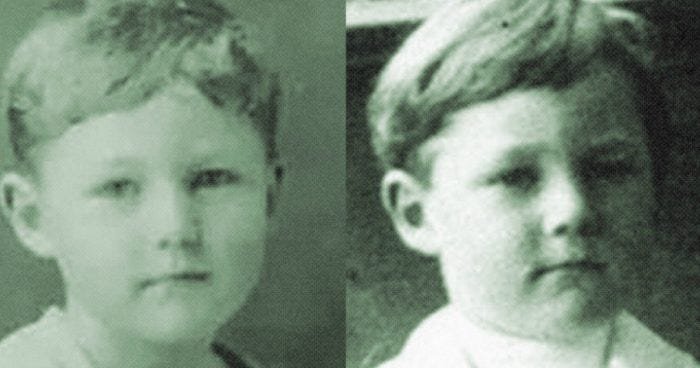When Frank Richards was born in 1887, there was no indication of what his future life would hold.
A happy, healthy child, he was admittedly a bit of an attention seeker, and perhaps this was the earliest glimpse into what was to follow in Richards’ remarkable life.
As a child, Richards quickly learned during the rough and tumble of play that he hardly felt any pain if he was hit in the stomach.
As a teenager, this peculiar trait started to attract attention, and his reputation for having a cast-iron abdomen spread amongst the community in his home town, Minneapolis, and, further afield, through the state.


The Circus Beckons
In the early years of 1900, Richards joined the circus. He was already quite famous in parts of America, and it seemed a logical move. As the circus toured the States, Richards’ fame spread.
His act involved being hit with sledgehammers directly into his abdomen and long pieces of timber held by several men.
World War I intervened, and then afterwards, Richards decided to join the Vaudeville Circuit and go it alone. His stunts had increased in danger and were attracting larger and larger crowds.
Richards would demonstrate people jumping on his abdomen or being hit repeatedly by professional heavyweight boxers, famous names of the time like Jack Dempsey and Jess Willard, with seemingly no ill effects.
It is reported that Dempsey hit Richards consecutively in the stomach seventy-five times.
The Cannonball Moniker
By 1932, looking for new challenges, Richards devised a fresh take on his strength act.
Cannonball acts were popular in those days, with the usual operation being someone fired from the cannon. However, Richards had different ideas.
He decided to up the ante and have a cannonball fired into his stomach. Hence, he quickly acquired the name ‘Cannonball Richards’.
The ball weighed 47 kilograms or 104 lbs, and Richards would stand only ten feet away. He wore some sort of wrap around his stomach, presumably to prevent being singed or suffering some other kind of injury.
Perhaps the many years of target practice had prepared his stomach for this onslaught, but even so, it was remarkable that Richards showed virtually no ill effects after this stunt, and the crowds loved it.
When the cannonball hit, Richards was thrown backwards into a specially prepared canvas wall by the impact, rising to his feet almost immediately.

In a newspaper interview with the New York Times, Richards admitted to feeling the pain but said he could withstand it. He also said the process was exhausting, which is why he would only repeat the trick no more than twice on any given day.
The Real Deal
Military historians reading this story might just smell a rat. Plenty of evidence from historical wars makes it plain that no one can survive being hit by a cannonball at any range. It was a real cannonball, but Richards didn’t use a real cannon.
The 12-foot cannon was a spring-loaded device, a cannon in appearance, specially designed by Richards to propel the ball rather than fire it.
The cloud of smoke was fake; no gunpowder was used in the stunt. The cannon was primed to produce enough velocity to hit Richards in the stomach. Richards never hid the fact that this wasn’t a real cannon.
The performance did take its toll, which is why he limited the act to at most twice a day. On one occasion, the cannon was set slightly too high, and the cannonball hit him in the sternum rather than the abdomen.
Richards resorted to his tried and tested R’ n’ R. Rock and rye was a mix of rye whisky sweetened with a decent helping of rock candy. To follow, a cigar.
When interviewed about the cannonball stunt, Richards said that one of the things that compelled him to keep going and take bigger risks was the roar of the crowd.
The seeds for this were clearly sewn in his childhood when he loved being the centre of attention.
Richards’ Lasting Legacy
Despite the demands made on his body throughout his life, Richards lived to the grand old age of 81, dying on February 7th, 1969, in Long Beach, California, of natural causes. His legacy lives on.
A whole episode of the famous American TV series ‘The Simpson’ entitled ‘Homerpalooza’ references Richards’ exact act when Homer Simpson performs the stunt.

The rock band Van Halen features Frank Richards on the cover of their album, ‘Van Halen III.’
Richards was also featured in the cartoons ‘Freakazoid!’ and ‘The Fairly OddParents’. The stuntman, Preston Lacey, re-enacts the performance at the beginning of the ‘film Jackass 3D’.
Human Marvels
There has always been an appetite for people who can perform seemingly impossible acts, testing human ability, including pain to the ultimate.
Just watch modern talent shows; there will always be a couple of acts that put their lives at risk and have the audience and the judging panel on the edge of their seats.
Frank Cannonball Richards was just one in a long line of human marvels, people who were fired out of cannons or who lay on beds of nails. However, Richards’ act was unique and had never been performed before Richards did it or since.
It’s a moot point whether audiences of the time really understood that the cannon wasn’t real.
On one level, it almost didn’t matter. Most ordinary people would not have been able to withstand the impact of the cannonball even fired in the circumstances of Richards’ stunt with a spring-loaded cannon.
The performance was still remarkable, even if it wasn’t quite what it appeared.
Richards never tried to trick anyone with his stunt; he wasn’t an illusionist – Frank Cannonball Richards was the ultimate showman, and his extraordinary act lives on today in different guises.
Sources
https://historyofyesterday.com/frank-richards-the-real-life-iron-man/
https://en.wikipedia.org/wiki/Frank_Richards_(performer)
https://www.neatorama.com/2007/11/27/frank-cannonball-richards-and-his-indestructible-belly/
https://military-history.fandom.com/wiki/Frank_Richards_(performer)













Leave a comment